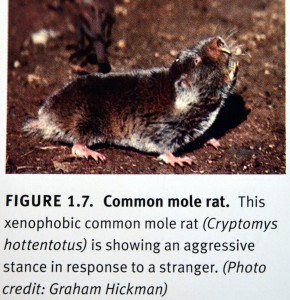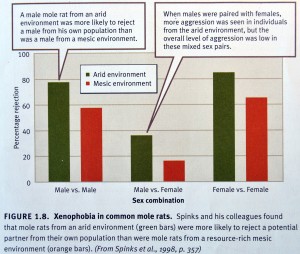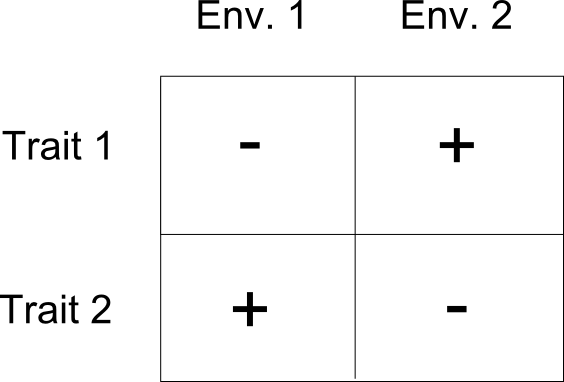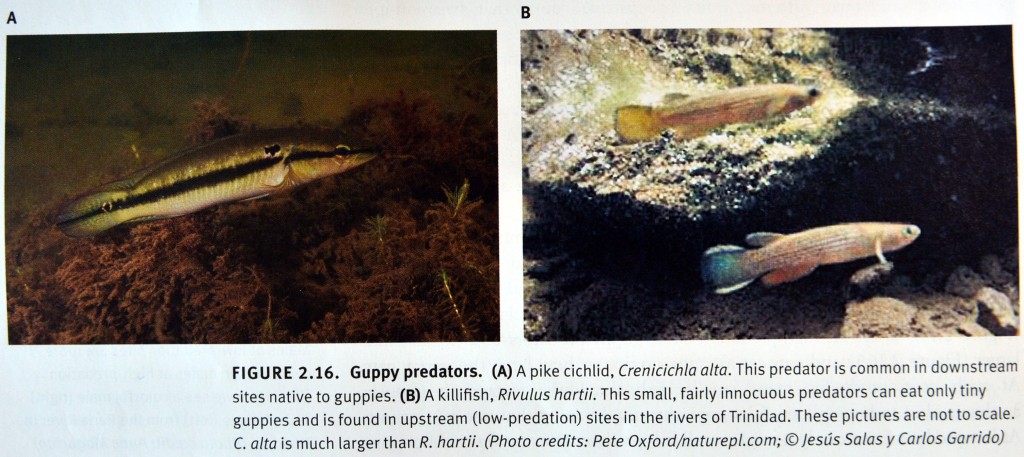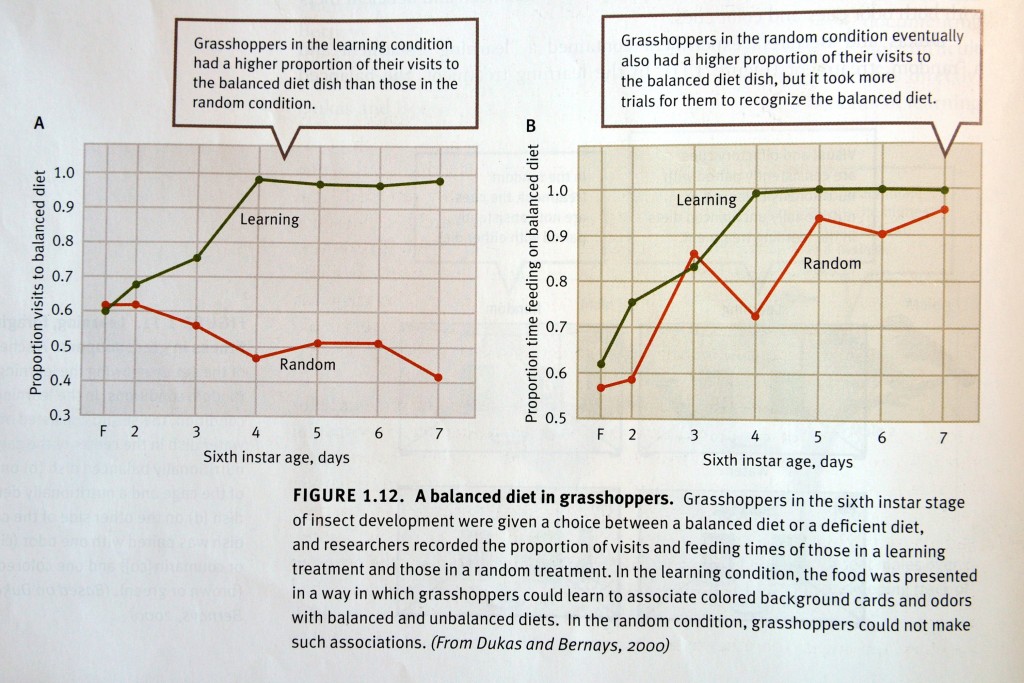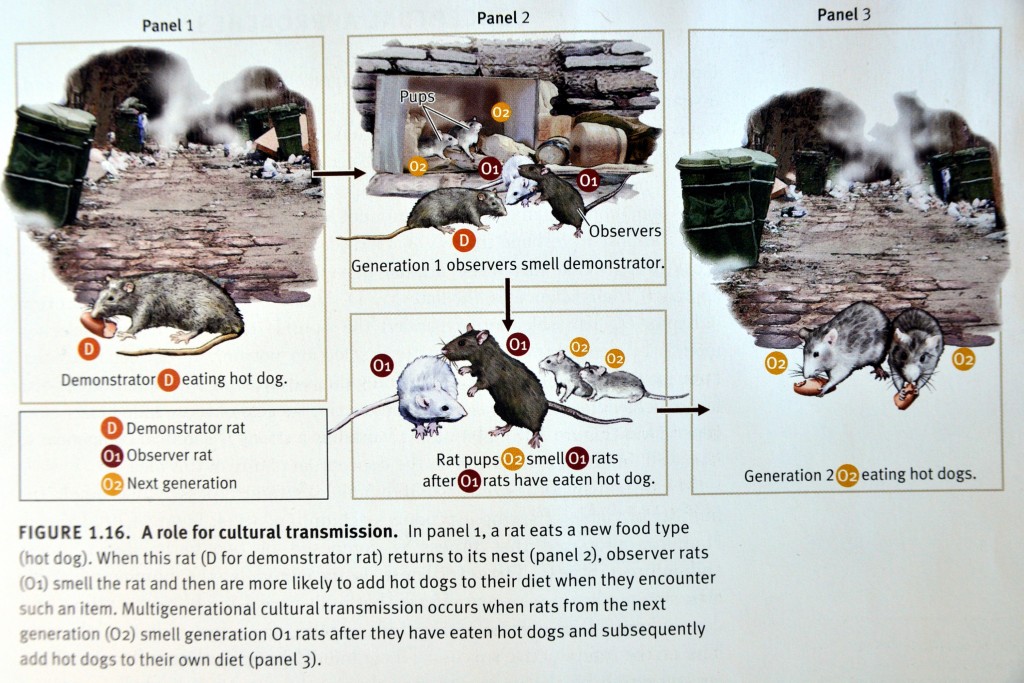Another Textbook
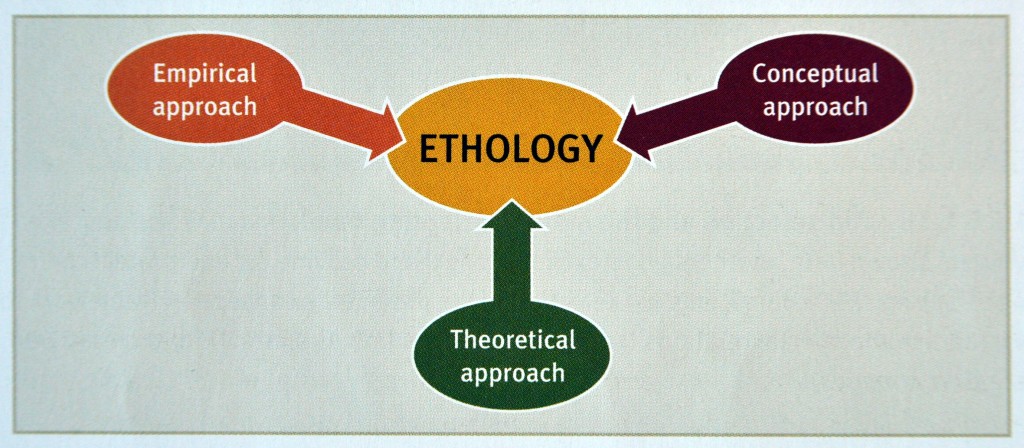
Interaction of Mate Attraction and Parasitism
Case: Tropical field cricket on Kuaui
Tropical field cricket males “sing” to attract females. A parasitic fly uses male cricket song to locate hosts. On Kuaui, researchers noted much less male cricket song, but crickets were still abundant. Two phenotypes of males were found, normal males and “flatwing” males. The flatwing males have wings lacking the strong files that are used to create cricket song. Flatwing males also are attracted to singing males, and reproduce with females who also respond to male singers. Flatwing males are parastized much less often than singing males.
Resource Availability, Gender, and Xenophobia
Case: Common Mole Rats
Common Mole Rats are a colonial mammalian species that live in both mesic and arid ecological zones. Resource availability is higher in mesic zones. Xenophobia (rejection of strangers) was measured, taking into account gender and ecological zone of subject and stranger. Arid zone mole rats show significantly more xenophobia. This is modified somewhat by mismatch in genders, with less xenophobia expressed when subject and stranger are of opposite gender.
Conceptual Discussion of Natural Selection and Ability to Learn
Here’s a hypothetical discussion of natural selection and individual learning.
The idea that natural selection can impact the ability to learn has also been established in computer simulations: Learning and Evolution in Neural Networks (1990), by Nolfi, Elman, and Parisi (PDF).
What assumptions are made for this discussion? Consider the role of ability to gather food for offspring under typical conditions.
The reproductive capacity of an individual is known as fecundity. The degree of resource investment an individual makes for an offspring varies enormously between species, and sometimes even within a species depending on the environmental context. At the extremes, you can have minimal investment in any one offspring, and production of a great many offspring, and at the other extreme, the resource investment per offspring is very high and few offspring are produced.
The same trait can have different effects in different environments. There are various ways this can work out, but an interesting general case is depicted above. If the trait has opposite effects in two environments, this leads to a situation where plasticity in an organism’s response to its environment is favored.
The two broad sorts of strategies depicted above are named after elements of the mathematical analysis of population dynamics. An r selected population only rarely might approach its environmental carrying capacity, and is named after the “intrinsic rate of increase”, r. A k selected population tends to remain near its carrying capacity, and carrying capacity is known as k.
Stock assessment by wildlife biologists was typically done by figuring out the age structure of a population, working out reproductive contributions of each age class, and iterating that forward in time (via a Leslie matrix or similar model) to determine the maximum sustainable yield (MSY). This works, more or less, if the MSY does not create a new, lower k (carrying capacity) for the population. If it does, though, one brings in not just ecological factors, but evolutionary factors. Studies within the past two decades on some fish species show that strong selection on large fish causes the population to shift from fast production of large fish to slower production of smaller fish, which is pretty much the exact opposite outcome of what stock management policies are supposed to do.
Example of Selection
Case: Guppies in Trinidad rivers
Our cast:
Male and female guppies
Distinct environments (different parts of rivers)
Guppy predators (killifish and pike cichlids)

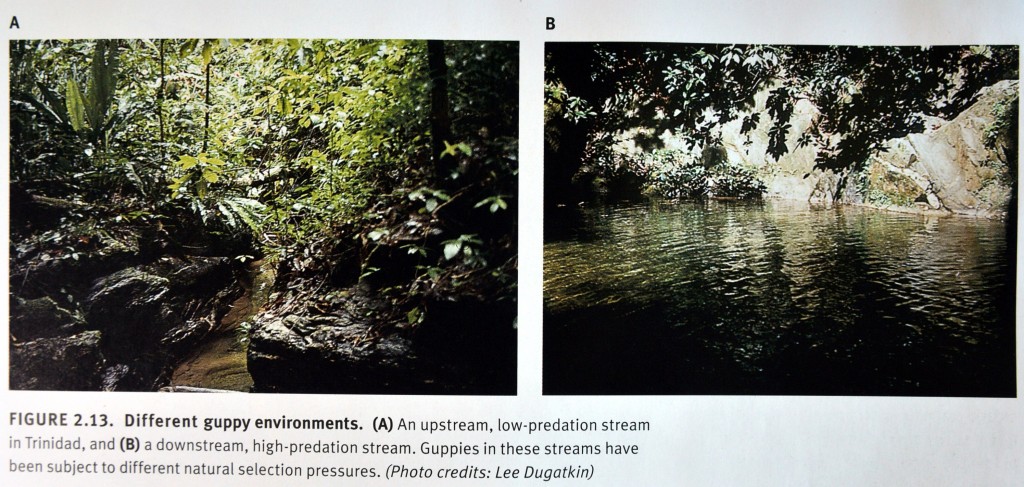

Individual and Cultural Learning
Cases: Grashoppers, rats
Grasshoppers in experiments learn cues associated with sources of a balanced diet.
Rats can learn from cues provided by other rats. In this case, the learning has to do with discretionary food choices.

Optimal Foraging Theory
Case: Cheetahs and gazelle fawns

Sources
Case studies are taken from “Animal Behavior”, 3rd Edition, by Lee Dugatkin.



